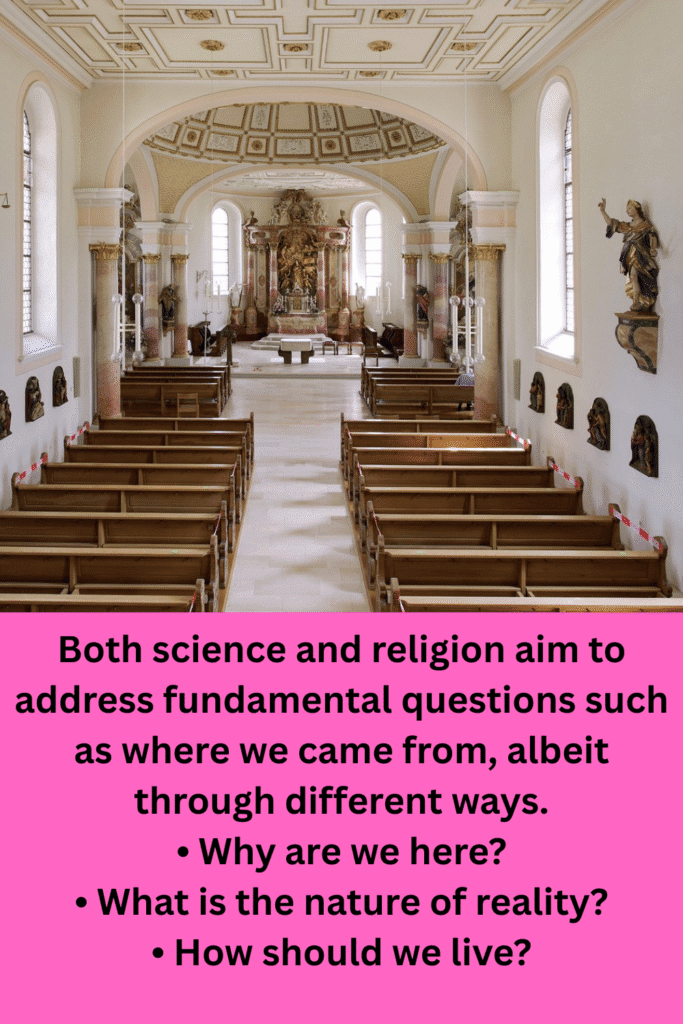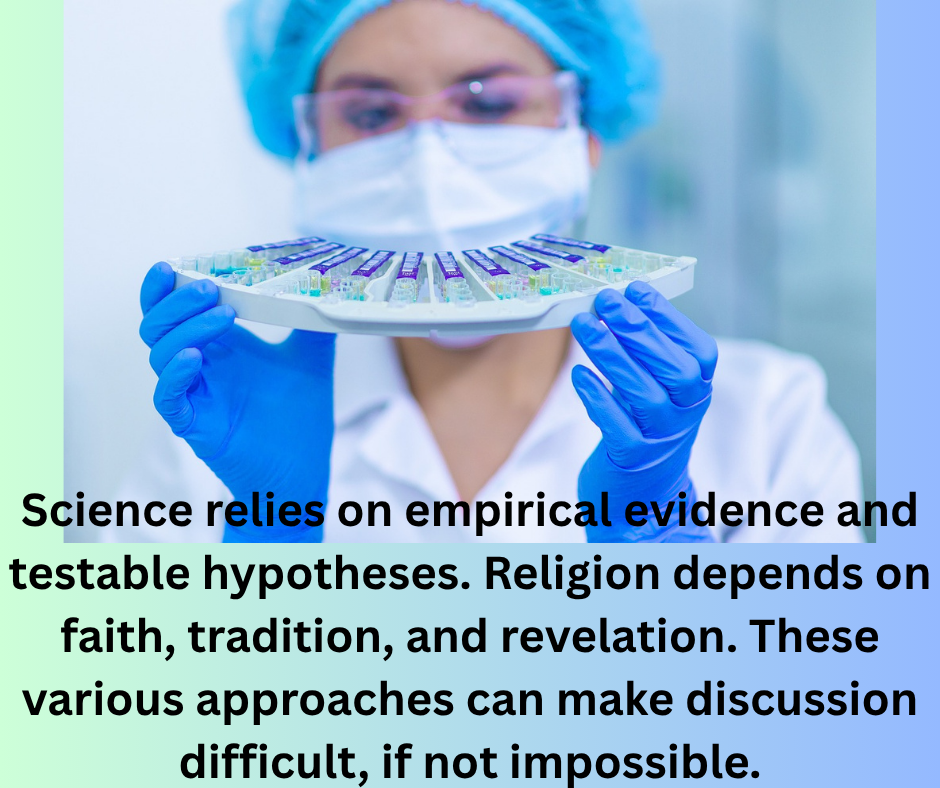Introduction
For centuries, science and religion have often been viewed as opposing forces. One is grounded in empirical evidence and reason, the other in faith, spirituality, and divine revelation. This perceived conflict has led to intense debates about the origin of life, the universe, morality, and the meaning of existence. But as the world becomes more interconnected and knowledge continues to grow, many are asking a critical question: Will science and religion ever work together?

In this article, we will explore the historical tension, current dialogues, and future possibilities between science and religion. By the end, you’ll have a clearer understanding of whether these two worldviews are doomed to clash forever—or if they can finally cooperate for the betterment of humanity.
Table of Contents
A Historical Perspective: Science vs. Religion
Science and religion have frequently been at odds. One of the most famous examples is the Galileo affair in the 17th century, where the Catholic Church condemned Galileo for supporting the heliocentric theory. This event is often cited as the beginning of the perceived war between science and religion.
In the 19th century, Charles Darwin’s theory of evolution further intensified the divide. Many religious leaders saw it as a direct challenge to the biblical account of creation. As science progressed, from astronomy to quantum physics, the gap seemed to widen.
But has it always been this way? Not necessarily.
Many pioneers of science, such as Isaac Newton, Gregor Mendel, and Georges Lemaitre, were devoutly religious. Lemaitre, a Catholic priest, actually proposed the Big Bang theory, one of the most accepted scientific explanations for the origin of the universe.
The Common Ground: Shared Questions and Wonder
Both science and religion aim to address fundamental questions such as where we came from, albeit through different ways.
• Why are we here?
• What is the nature of reality?
• How should we live?
Science answers the “how” through observation and experimentation. Religion often addresses the “why,” offering meaning, values, and purpose.
Albert Einstein famously stated, “Science without religion is lame; religion without science is blind.” This quotation shows the idea that both domains can benefit from each other’s views.
Areas Where Science and Religion Are Already Collaborating
Despite the tension, there are areas where science and religion already work together or hold potential for collaboration:
Bioethics
Issues like genetic engineering, stem cell research, euthanasia, and AI ethics demand moral guidance. Religious traditions often provide ethical frameworks that science alone cannot.
For example, medical professionals frequently consult religious scholars and ethicists when making decisions about end-of-life care or organ donation.
Environmental Stewardship
Many faith traditions emphasize caring for the Earth, aligning with scientific efforts to combat climate change. Movements like “Green Faith” and the Laudato Si’ encyclical by Pope Francis are examples of how religion supports environmental science.
Mental Health and Well being
Science recognizes the psychological and emotional advantages of spiritual practices such as prayer, meditation, and mindfulness. According to studies, persons who hold religious or spiritual views are less stressed and have higher levels of life satisfaction.
Cosmology and the Universe
Modern physics raises profound questions about the origin of the universe, the nature of time, and the existence of multiple dimensions—questions that deeply intersect with theology and philosophy.
Challenges to Cooperation
Despite these points of convergence, several obstacles stand in the way of science and religion fully working together:
Liberalism vs. Symbolism
When religious texts are interpreted literally, they often conflict with scientific findings. This creates unnecessary tension. A symbolic or allegorical reading of scriptures can ease this conflict.
Mistrust and Misunderstanding
Both sides have long misunderstood each other. Some scientists dismiss religious belief as outdated superstition, while some religious leaders view science as morally bankrupt or dangerous.
Different Methodologies
Science relies on empirical evidence and testable hypotheses. Religion depends on faith, tradition, and revelation. These various approaches can make discussion difficult, if not impossible.
Bridging the Divide: Steps Toward Cooperation
If science and religion are to work together, several steps must be taken:
Promote Education in Both Fields
Schools and universities should encourage students to explore both science and theology. Understanding both sides fosters critical thinking and open dialogue.
Encourage Interdisciplinary Research
Scientists, theologians, and philosophers should collaborate on common problems. Topics like consciousness, the origin of life, and the ethics of technology benefit from a multifaceted approach.
Foster Respectful Dialogue
Mutual respect is essential. Science and religion should not seek to “defeat” one another, but to understand and complement each other.
Highlight Role Models
Figures like Francis Collins, John Packinghouse, and Karen Armstrong bridge the gap by embodying both scientific excellence and spiritual depth.

The Future: A New Era of Integration?
As humanity faces global challenges—climate change, pandemics, technological disruption—there is a growing need for holistic solutions that integrate both scientific insight and moral wisdom. Religion can inspire compassion, justice, and purpose. Science can offer innovation, precision, and discovery.
Rather than opposing forces, they could become two wings of the same bird, lifting humanity toward truth and understanding.
Emerging fields like neurology, quantum spirituality, and AI ethics point toward a future where science and religion collaborate rather than clash.
Conclusion: Unity in Diversity
So, will science and religion ever work together? The answer is not a simple yes or no. However, evidence reveals that collaboration is not only feasible; it is now occurring in some areas and has the potential to spread further.
Both science and religion pursue truth, albeit from different angles.. Instead of perceiving them as adversaries, we might consider them as collaborators, each providing tools for navigating the intricacies of life, the mysteries of the world, and our time’s moral challenges.
If we can move beyond dogma and division, and embrace humility and curiosity, science and religion may not only coexist, but thrive together, bringing us to a deeper, more integrated understanding of reality.